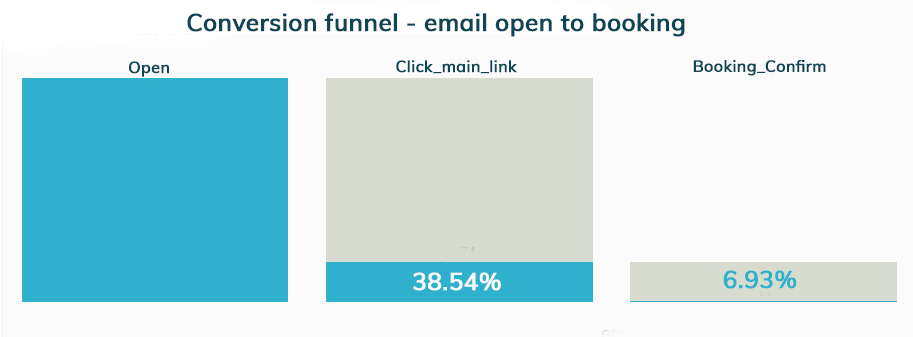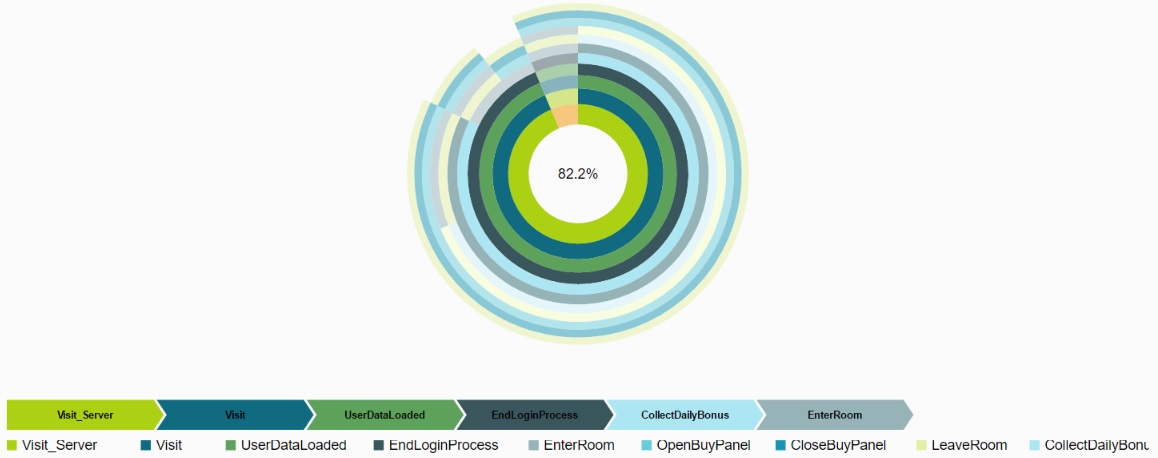The analytics space in today's digital age is overflowing with tools to analyze user behavior. Web analytics or business intelligence (BI) branch out into more narrowly defined types of analytics, such as customer experience analytics, digital intelligence, click-stream analytics and real-time analytics.
There are also analytics shaped around a specific industry, such as game analytics, ecommerce analytics and others.
It’s a jungle out there, and in this customer-centric era, the only way to join the big data and analytics evolution is by choosing the right tool to gain an understanding of your customers’ digital behavior, what they want and what drives them to purchase or engage with your company.
Understanding customer behavior is a major part of your digital success.
Behavioral analytics, just as the name implies, is built to analyze and provide explanations and insights about customers' digital behavior.
It's more than seeing where they click
Behavioral analytics is the evolution of traditional business intelligence. It goes beyond standard analytics to reveal insights on which pages are viewed, where customers click and how many of them continue further down the conversion funnel.
Behavioral analytics rely on masses of user event data, gathered from all customer actions across websites, mobile apps and marketing campaigns accessed from multiple devices, in various sessions. Behavioral analytics, built for diverse data sources, observe digital behavior as a timeline of customer actions that yield meaningful understanding of what customers do.
Digital behavior is a timeline of user actions
Behavioral analytics, a branch of time-series analytics, analyzes actions over time. It's like watching a movie, or looking at a series of pictures, whereas analytics that observe single user actions, such as loading a webpage or a form submission, are more like a snapshot. Although these snapshots tell you what customers did, when, and where they came from, you should dig deeper to understand how they reached that point and why.
Behavioral analysis over time can provide answers to multilayered questions, such as:
- How long does it take a registered user to ask for help?
- Which items did users search for in comparison with the products they ended up adding to their cart?
- How do these results vary between users from different traffic sources?
When you can analyze the sequence of events that users took over time, you'll build a much clearer picture of user behavior (the why and how). By breaking it down into smaller steps, you can identify the goals of each event and ask yourself what actions drove the user to complete each action.

What happens when businesses need to know the series of actions a user took to reach a specific goal? In other words, the beginning, middle and end of their customer journey. They need to use behavioral analytics to reveal patterns and give insights into future customer behavior, depending on the type of user and the particular circumstance.
For example, let’s say your business is a travel booking site that allows users to order flights and holiday packages online, and you discovered a drop in purchasing for a particular holiday package over the last week. You’ll want to analyze user behavior by looking at the path customers took before purchasing that holiday package in the last week. How did they arrive at the site in the first place? For this booking site, AdWords campaigns drive a significant amount of their traffic.
Further analysis revealed that one campaign that promoted this particular holiday package in the past week was driving significantly more traffic than the rest. The question was why?
After installing a web analytics tool called HotJar (which recorded videos of the screens of actual users as they visited the site), you discover that visitors to many of the campaigns' landing pages were missing product images. That meant visitors were coming to the landing page and not seeing an image of the offer they had been presented within the AdWords campaign. These visitors were probably frustrated and confused, and quickly left the site.
One campaign, however, didn't have this particular problem, and that's why it was converting 50 percent better than the others. Let's explore a few more ways businesses can detect patterns and improve conversions with behavioral analytics.
The paths to a deeper understanding of the customer journey
Conversion funnel analysis
Let’s go back to our example above from the online booking site. The booking site needs to further explore its conversion funnel to booking. Traditional analytics doesn’t allow a flexible funnel, meaning that the steps a customer takes to reach conversion are predefined (e.g., visit site, visit page x, add to cart).
These macroconversions, while important to measure, are only part of the customer story. Behavioral funnel analysis allows businesses to examine any series of steps (or microconversions) customers take to arrive at that macroconversion.
Take a look at the example, below:

Examining the last three steps before conversion with behavioral analysis, we see that 38.54 percent come from the same main link of an email campaign. Drilling down further, we discover that most of this 38 percent were VIP customers from a particular geographic region. This flexible behavioral funnel allows businesses to discover these insights, which can then be used to target these and other customer segments more effectively.
These are the insights that can be delivered to engagement engines and result in shaping the customer journey through personalization and next-best offers (NBOs).
Behavioral path analysis
Let's move on to a different example from a gaming company. Sometimes it's not about conversions but rather the ability to discover a player's behavioral patterns and learn from them. Behavioral path analysis allows you to define a player's path using a range of options, such as ending the login process, entering the game room, accepting a bonus – all within a chosen timeframe.

This behavioral path analysis discovered that of the 74 percent of players who opened a buy panel but didn't end up completing the purchase also collected a daily bonus as one of the first steps in their single session.
Should the gaming company explore alternative methods of engaging players besides offering daily bonuses? It's worth running a few different marketing campaigns to see how it affects player behavior.
Taking segmentation to the next level with behavioral segmentation
"Consumers are more motivated by a $3 latte than three single dollar bills. And they'll think a product is a great deal if it is simply placed next to a more expensive one," says Professor Dan Ariely, professor of psychology and behavioral economics at Duke University
You might think consumers approach their decisions to buy rationally. But let's face it: Most of the time, digital behavior is completely unpredictable. Sometimes you think you've created the perfect landing page for the Brazilian health food section of your ecommerce site, or the most engaging video, and ... there’s no conversion. Or it starts off great and then suddenly drops off unexpectedly.
What might appeal to American customers might not work well for Brazilians who get to the site from a completely different ad that promises the ability to fight a local virus with minerals and herbs.
The key is to approach the right audience with the right tools. Or as we call it – segmentation.
Customer segments are common in analytics, and they mostly revolve around one characteristic or one single action, often related to the customer's geolocation. It might be the campaign they clicked, the country they registered from or the specific day that they joined. Behavioral analytics takes segmentation to the next level by segmenting customers according to their behavior.
Take this example that compares the steps of three different customer groups as they move through the conversion funnel: First, they view the main page, then they search for the item on the page, and finally, they view the particular item.

After careful comparison, we find that the whales have a much lower dropoff rate after both searching and viewing an item as well as a higher global conversion rate. These powerful behavioral segmentation analytics provide the types of insights that let businesses optimize their products for future user engagement.
The business impact of understanding the customer journey
The truth is, says Dan Ariely, that consumer behavior is actually quite predictable in its unpredictability. I would add that once you start analyzing customer behavior to understand the full customer journey for different customer segments, you'll learn exactly how to make your customer behavior more predictable.
The ability to produce insights that shape the customer journey is a powerful advantage in any online business. It's about understanding the customer's intent however unpredictable (or predictable in its unpredictability) it may be. According to McKinsey, businesses that actively shape customer decision journeys are the ones that will have a serious competitive advantage. Behavioral analytics provides the insights that allow businesses to shape these customer journeys.
